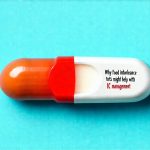Navigating healthcare can be incredibly challenging, especially for individuals who experience heightened sensitivity to medications – those who are more prone to adverse reactions or struggle with tolerating even seemingly mild side effects. This isn’t simply about being “delicate”; it often stems from genetic predispositions, underlying health conditions, or a history of medication intolerance. For these patients, the conventional approach of ‘start low, go slow’ can still result in debilitating symptoms, impacting their quality of life and creating anxiety around necessary treatments. Finding medications that offer therapeutic benefit without significant drawbacks requires a nuanced understanding of pharmacological options, personalized treatment strategies, and open communication with healthcare providers.
The core challenge lies in the fact that virtually all medications carry some level of potential side effects. What differentiates a tolerable side effect from an incapacitating one is highly individual. Some people might experience mild nausea as a trade-off for pain relief, while others find even minor digestive upset unacceptable. This sensitivity isn’t always predictable; a medication well-tolerated by many can cause significant issues for a sensitive patient. It’s vital to remember that patient experiences are valid, and seeking alternatives when faced with intolerable side effects is not only reasonable but essential for effective healthcare. This article will explore strategies for managing medications in sensitive patients, focusing on minimizing adverse reactions and maximizing therapeutic outcomes.
Understanding Medication Sensitivity
Medication sensitivity isn’t a single condition; it’s an umbrella term encompassing several factors. Genetic variations play a significant role, influencing how the body metabolizes drugs. Individuals with certain gene mutations might process medications too quickly or too slowly, leading to either insufficient drug levels or toxic accumulation. Other contributing elements include age (both very young and elderly patients are often more sensitive), kidney and liver function (as these organs eliminate drugs from the body), concurrent medical conditions, and even interactions with other medications or supplements. A history of allergic reactions or mast cell activation syndrome can also heighten sensitivity.
It’s important to distinguish between a side effect and an allergic reaction. Side effects are predictable, often dose-dependent consequences of a drug’s pharmacological action; for example, drowsiness from antihistamines. Allergic reactions, on the other hand, involve the immune system and can range from mild skin rashes to life-threatening anaphylaxis. Medication sensitivity goes beyond allergies – it’s about an exaggerated or unusual response to a medication even without an allergic mechanism. This often manifests as amplified side effects, requiring lower doses or alternative therapies.
Finally, understanding that perception of side effects is subjective is crucial. Anxiety and fear surrounding medications can actually amplify perceived symptoms. A strong patient-provider relationship built on trust and open communication is paramount in navigating these complexities. Patients should feel comfortable articulating their experiences without judgment and advocating for adjustments to their treatment plan.
Strategies for Minimizing Side Effects
The cornerstone of managing medication sensitivity is a proactive, personalized approach. This begins with careful medication selection – choosing drugs known to be gentler on the system or having fewer common side effects. For example, when prescribing an antidepressant, a doctor might opt for one with a lower risk of sexual side effects if that’s a concern for the patient. Equally important is starting with the lowest effective dose and titrating upwards very slowly, monitoring closely for any adverse reactions. This “start low, go slow” approach isn’t always sufficient for highly sensitive patients, however, requiring even more individualized adjustments.
Beyond medication selection and dosage, several other strategies can help mitigate side effects. Utilizing pharmacogenomic testing – analyzing a patient’s genes to predict their response to certain medications – is becoming increasingly common. This allows doctors to select drugs that are likely to be well-tolerated based on the individual’s genetic profile. Additionally, exploring alternative routes of administration (e.g., topical vs. oral) can sometimes reduce systemic exposure and minimize side effects. For example, using a topical NSAID instead of an oral one might alleviate pain with fewer gastrointestinal issues. Finally, integrating supportive therapies like dietary changes, stress management techniques, and physical therapy can often enhance treatment efficacy and potentially lower medication dosages needed.
Addressing Common Sensitivity Triggers
Certain classes of medications are more frequently associated with side effects that sensitive patients struggle to tolerate. These include:
- Antidepressants: Many antidepressants cause nausea, insomnia, sexual dysfunction, or weight gain. Selective serotonin reuptake inhibitors (SSRIs) and serotonin-norepinephrine reuptake inhibitors (SNRIs) can be particularly problematic for some individuals.
- Statins: Used to lower cholesterol, statins often cause muscle pain and fatigue, which can be debilitating for sensitive patients. Alternative strategies like lifestyle modifications and non-statin medications may be considered.
- Opioids: While effective for pain relief, opioids are notorious for side effects like constipation, nausea, and respiratory depression. Lower doses, alternative pain management techniques, and naloxone prescriptions (to reverse opioid overdose) are essential considerations.
Identifying these potential triggers allows healthcare providers to proactively address them. For example, if a patient has a history of antidepressant-induced nausea, starting with a low dose or choosing an antidepressant with fewer gastrointestinal side effects might be prudent. It’s also important to remember that side effects can change over time. A medication well-tolerated initially may eventually cause problems, necessitating adjustments to the treatment plan.
The Role of Compounding Pharmacy
Compounding pharmacies offer a valuable resource for sensitive patients. They can customize medications in ways that standard pharmaceutical companies cannot, providing options tailored to individual needs. This might involve:
- Altering the dosage form (e.g., converting a tablet into a liquid or cream).
- Removing inactive ingredients known to cause reactions (e.g., dyes, preservatives, fillers).
- Creating combinations of medications for convenience and improved adherence.
For example, a patient sensitive to the dye in a standard pain medication might benefit from a compounded version without that dye. Similarly, a child who struggles with swallowing pills could receive a liquid formulation instead. Compounding is not without risks, however. It’s crucial to use a reputable compounding pharmacy and ensure that all medications are prepared according to strict quality control standards.
Building a Collaborative Partnership
Ultimately, successful medication management in sensitive patients relies on a strong collaborative partnership between the patient and their healthcare provider. This includes:
- Detailed communication about past medication experiences – what worked, what didn’t, and why.
- Openly discussing concerns and anxieties surrounding medications.
- Actively participating in treatment decisions.
- Regular monitoring for side effects and prompt reporting of any new or worsening symptoms.
Empowered patients who advocate for their needs are more likely to achieve positive outcomes. Healthcare providers should be receptive to patient feedback and willing to explore alternative options when necessary, recognizing that the goal is not simply to prescribe a medication but to find a treatment plan that improves the patient’s quality of life without causing undue harm. This collaborative approach fosters trust, promotes adherence, and ultimately leads to better healthcare for those who need it most.





















